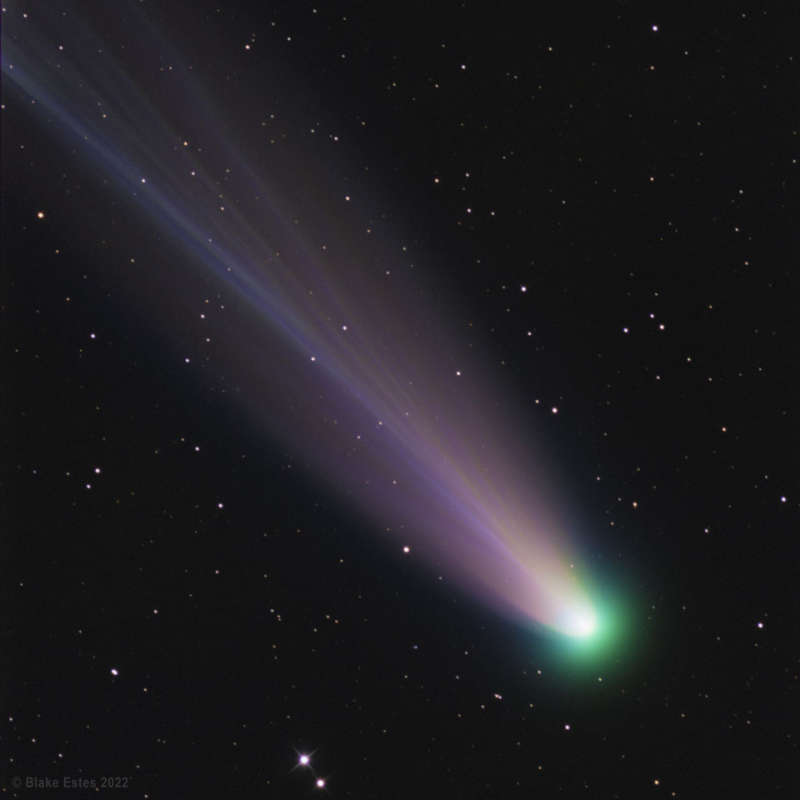Credit & Copyright: Blake Estes
(itelescope.net)
Explanation:
What does Comet Leonard look like up close?
Although we can't go there, imaging the comet's coma and inner tails through a small
telescope gives us a good idea.
As the name implies, the
ion tail is made of
ionized gas -- gas energized
by
ultraviolet light
from the Sun and pushed outward by the
solar wind.
The solar wind is quite structured and sculpted by the Sun's complex and ever
changing magnetic field.
The effect of the variable solar wind combined with different gas jets venting from
the comet's nucleus accounts for the tail's complex structure.
Following the wind, structure in Comet Leonard's
tail can be seen to move outward from the Sun even alter its wavy
appearance over time.
The blue color of the ion tail is dominated by recombining
carbon monoxide molecules,
while the green color of the coma surrounding the
head of the comet is created mostly by a slight amount of recombining
diatomic carbon molecules.
Diatomic carbon is destroyed by sunlight in
about 50 hours -- which is
why its green glow does not make it far into the ion tail.
The featured imagae was taken on January 2 from
Siding Spring Observatory in
Australia.
Comet Leonard, presently best viewed
from Earth's Southern Hemisphere, has
rounded
the Sun and is now headed out of the
Solar System.
1999 2000 2001 2002 2003 2004 2005 2006 2007 2008 2009 2010 2011 2012 2013 2014 2015 2016 2017 2018 2019 2020 2021 2022 2023 2024 2025 |
Yanvar' Fevral' Mart Aprel' Mai Iyun' Iyul' Avgust Sentyabr' Oktyabr' Noyabr' Dekabr' |
NASA Web Site Statements, Warnings, and Disclaimers
NASA Official: Jay Norris. Specific rights apply.
A service of: LHEA at NASA / GSFC
& Michigan Tech. U.
|
Publikacii s klyuchevymi slovami:
comet - komety
Publikacii so slovami: comet - komety | |
Sm. takzhe:
Vse publikacii na tu zhe temu >> | |
